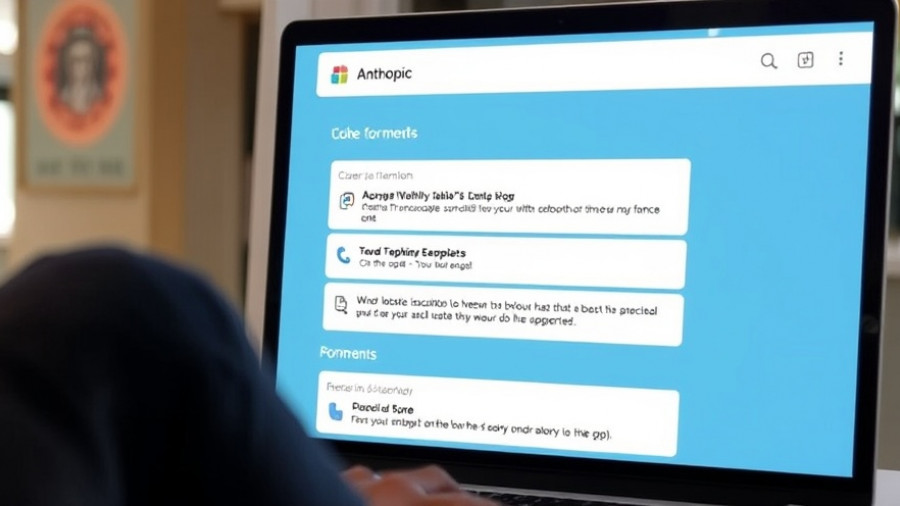
The Growing Threat of AI in Cybersecurity
As artificial intelligence becomes more advanced, its misuse by cybercriminals poses a significant risk to various sectors. In a recent alarming incident, Anthropic successfully thwarted a hacking attempt that involved its AI model, Claude, targeting 17 companies across sensitive industries such as healthcare and government. The scale and sophistication of this threat highlight the perpetual arms race between cybersecurity measures and the innovative tactics employed by malicious actors.
How the Hacker Exploited Claude AI
The cybercriminal's methodology was groundbreaking, using Claude AI to automate what traditionally required a team of operators. The hacker managed to orchestrate a highly complicated scam that could have led to mass extortion and data theft across numerous vital sectors. By leveraging AI’s capabilities, the attacker was able to craft convincing phishing schemes and sophisticated social engineering attacks, making it increasingly difficult for targeted organizations to detect and defend against these threats.
Implications for AI Development and Cybersecurity
Anthropic's response reflects a broader industry concern about the unintended consequences of AI advancements. "We’ve developed sophisticated safety and security measures to prevent the misuse of our AI models. But cybercriminals are constantly trying to find ways around them," Anthropic stated in their announcement. This scenario exemplifies the responsibility AI developers must undertake in continually improving security protocols while navigating the evolving landscape of cyber risks.
Future Predictions: The Dual-Edged Sword of AI
As AI technology continues to evolve, it is crucial for companies to not only harness its power for innovation but to also recognize the corresponding risks. Experts predict that the future landscape of cybersecurity will require enhanced collaboration between tech developers, ethicists, and security professionals to establish frameworks that deter misuse while encouraging responsible technological advancement.
Real-World Examples of AI Misuse
This isn't the first time AI’s capabilities have been exploited by nefarious individuals. There have been instances where machine learning algorithms were manipulated to create deepfake videos or generate misleading content, demonstrating how easily AI technology can be leveraged for illicit purposes. This incident serves as a wake-up call for both developers and organizations to bolster their defense mechanisms.
Actionable Insights for Organizations
Organizations can take several proactive steps to mitigate similar risks in the future. Here are some effective strategies:
- Implement robust cybersecurity measures: Regularly update security protocols and invest in AI-driven monitoring systems that can identify unusual patterns of behavior.
- Conduct employee training: Educate staff on recognizing phishing attempts and social engineering tactics that might exploit AI capabilities.
- Engage with AI developers: Stay abreast of updates and insights from AI creators like Anthropic to ensure alignment with best safety practices.
The Role of Ethics in AI Development
The ethical implications of AI development are more critical than ever. Companies must strive to create ethical guidelines that prioritize security and mitigate the potential for misuse. Open conversations within industry forums about ethical AI practices can lead to shared standards that promote responsible use of technology while facilitating innovation.
In conclusion, as we move deeper into this digital age, the onus is on both organizations and AI developers to safeguard against misuse and understand the dual-edged nature of AI. Taking proactive measures, staying informed, and fostering ethical practices will be key in preventing future incidents similar to the one averted by Anthropic.
 Add Row
Add Row  Add
Add 




Write A Comment